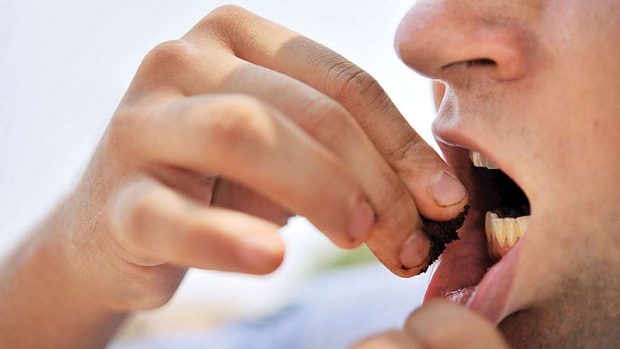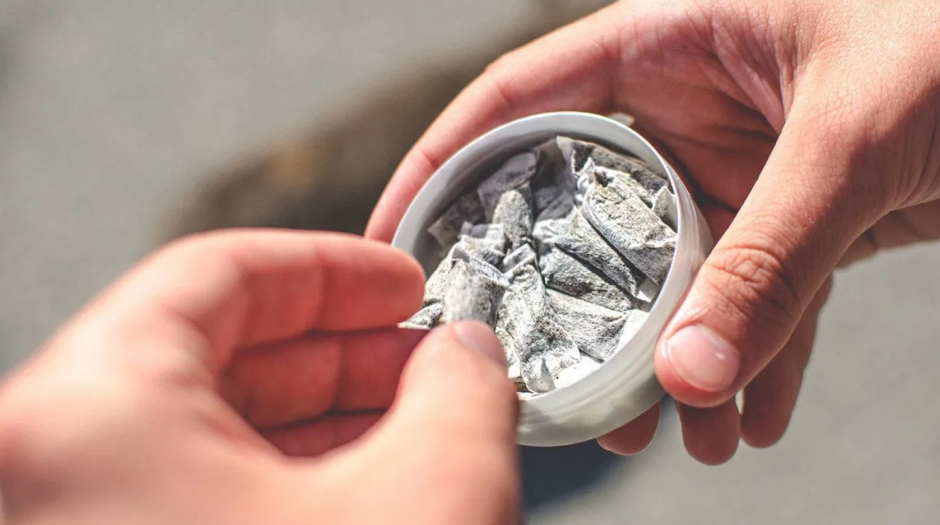Before diving into the topic, it is important to understand what the tip is. In simple terms, dip is a type of smokeless tobacco, which is made from ground tobacco leaves. Some people also call it a chew, a dipping tobacco, a snus, a chewing tobacco and a spit. People typically place a dip between their lower lip or inner cheek and guns and suck on it in order to absorb the nicotine. You might think that dip is not harmful for your health as you do not inhale it the way you do with cigarettes. However, it is harmful for a person’s health in many different ways.
Regular usage of dip can lead to the development of the following health conditions:
• Tooth loss
• Gum disease
• Receding gums
Due to the fact that dip is not as commonly used as cigarettes, a lot of people do not know what effects it has on our body. Therefore, the following sections of this article depict the possible effects of our body on our gums, mouth and teeth. In addition to that, it shows common myths that people have created about dip and its safety.
Is Dip able to Cause Problems with Your Gums?
Top rated dentists claim that regular use of dip can lead to a number of oral and gum diseases. In 2016, one study compared the oral health of people who smoke to people who were using chewing tobacco on a regular basis. The results of the study showed that both groups of people were running an increased risk of developing gum disease.
Some specialists claim that the use of smokeless tobacco can be directly linked to receding gums. In some cases, gum recession can cause tooth loss. This can occur if bacteria build up around the tooth of the tooth leading to further gum disease. If you need professional dental help, do check out https://www.sjpdental.com/.
Effects of Dip on the Teeth and Gums
Normally, dip contains more than 4,000 chemicals that increase the likelihood of developing cancer. Specialists link a regular use of dip to oral cancer, esophageal cancer and pancreatic cancer. In addition to that, FDA (The Food and Drug Administration) states that around 2,300 people in the United States each year are diagnosed with cancer that is caused by smokeless tobacco. 70 percent of all the aforementioned cases are related to oral cancer.
Apart from all the potential problems mentioned above, chewing tobacco can also cause leukoplakia condition, according to the American Dental Association. This condition involves a white precancerous growth that forms in your mouth. It increases the likelihood of developing oral cancer. The American Dental Association also worms that the use of chewing tobacco on a regular basis can also lead to the following conditions:
• Tooth loss
• Tooth cavities
• Teeth staining
• Bad breath
• Bone loss around the teeth
Most Common Myths About Chewing Tobacco
As was mentioned above, there are different myths and misconceptions about dip. The most common ones are mentioned below.
• Chewing tobacco is not harmful as people do not inhale it: the vast majority of people think that dip is harmless as it is not inhaled. Althout, people have to clearly understand that tobacco use in any form can lead to an increased risk of some types of cancers. Chewing tobacco still contains cancer causing chemicals, even though you do not inhale dip. The National Cancer Institute claims that at least 28 chemicals in tobacco are believed to increase the chance of developing oral, esophageal and pancreatic cancer. The Centers for Disease Control and Prevention add that these chemicals are also known to increase the chance of a heart attack.
• Chewing tobacco is not as addictive as cigarettes: this is also a very common misconception that people have about this type of smokeless tobacco. As you probably know, chewing tobacco also contains nicotine, just like cigarettes. Nicotine in tobacco is what makes people addicted to smoking. Some studies show that when using dip, the nicotine is faster absorbed through the skin on the inside of your mouth. Nicotine can also modify the chemical functions in your brain and mimic dopamine. Due to the fact that dip contains nicotine, it can be concluded that it is as addictive as cigarettes. Nicotine is believed to cause a number of symptoms including irritability, sleep disorder and mood swings when a person tries to quit it.
• Negative effects of dip can be diminished by proper oral hygiene: some people strongly believe that maintaining proper oral hygiene can protect you from the negative effects of chewing tobacco. However, top rated dentists claim that even if you follow good oral hygiene and brush and floss your teeth on a regular basis, you will still still experience negative effects of chewing tobacco. If you want to eliminate any chance of damage to your mouth, teeth and gums caused by smokeless tobacco, the only option would be to quit.

How to Quit Dip?
Without any doubt, it is not easy to quit dip but you need to keep in mind that it will drastically improve your oral and overall health. It will also decrease the chance of encountering cancer, a heart attack and stroke. If you have already decided to quit dip, it is highly recommended to talk to your healthcare provider first. Specialists will be able to provide you with the best options that will make the whole process of quitting easier. In some cases, you will be prescribed with certain medications aimed to manage your withdrawal symptoms. Some of the treatment ways for nicotine withdrawal are as follows:
• Over-the-counter products, which include nicotine replacement products such as gum, patches and lozenges.
• Prescription products such as inhalers and nasal sprays.
According to a number of studies, people experience the worst withdrawal nicotine symptoms during the 2nd and 3rd days after quitting. Therefore, it could be the hardest period. Although, specialists have prepared a list of recommendations that might help to ease these withdrawal symptoms. They are as follows:
• Mark the quit day on your calendar and commit to that day
• Reduce the use of dip as the quit day gets closer
• Throw all the tobacco related items from your house
• Make use of hums, mints and lollipops that you can chew or suck on when you have a craving. You should also make sure that these alternatives are sugar-free, thus, do not harm your teeth
• Make a list of reasons for quitting smoking and place it where you will often see it
• Determine all the possible triggers and the ways to avoid them
• Make sure you are busy during the whole day so you do not have time to think about smoking
• You can also join a group of people who are trying to quit smoking tobacco.
To summarize the aforementioned, it can be said that the use of chewing tobacco on a regular basis can increase the risk of developing pancreatic, oral and esophageal cancer. In addition to that, gum disease, receding gums, tooth decay and tooth loss are often linked to dip use. Quitting dip can be extremely difficult for some people. This is normally because of all the withdrawal symptoms of nicotine.
However, the only way to eliminate the chance of damaging your oral and overall health is to quit smoking completely. It is highly important to have a quit plan in place, which will help to effectively deal with all the nicotine withdrawal symptoms. It is also extremely important to create a strong support network that will assist you in sticking to the plan.
Read More:
Top 5 types of addictions and their side effects
Easy tips to keep your smile in great shape
Benefits of a regular dental check-ups
Top 5 ways to quit smoking for good


